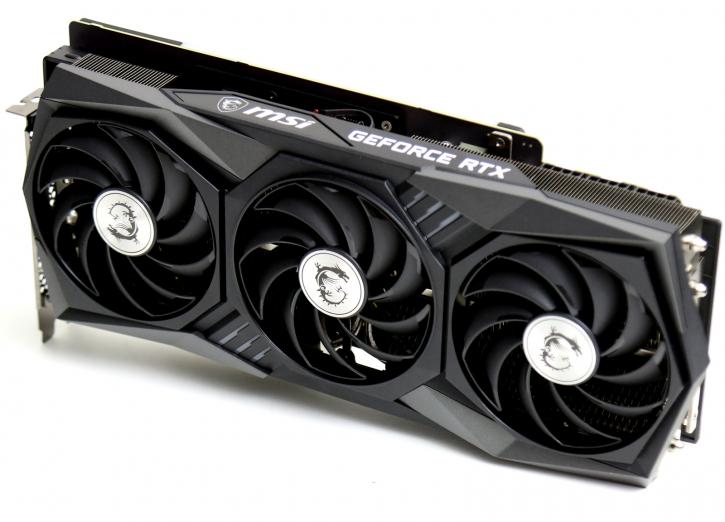Introduction
MSI GeForce RTX 3080 GAMING X TRIO 10G review
This card arrived fashionably late due to the always nagging customs delays. None the less, meet the dark-colored beast. In this review, we benchmark the GeForce RTX 3080 GAMING X Trio from MSI; yes, MSI is back with a new Gaming X Trio, with that TRIO, of course, short for a triple-fan solution with an otherwise heavily customized product. With their aim to perform at low acoustics combined with a beautiful design card. And let me already spill the beans, this card is SILENT and performed the best out of all cards we to date have gotten our hands on (quite more then you'd expect really). Let's start this review, shall we?
It was 2017 when the name Ampere as a GPU architecture surfaced onto the web, and up-to earlier this year, NVIDIA has not listed this name in any of its roadmaps on the consumer side. It was with military-level secrecy that the Ampere consumer part was developed. Ampere, of course, is the base unit of electric current in the international system of units. But the GPU is named after André-Marie Ampère, a French mathematician and physicist, considered the father of electrodynamics. NVIDIA has a track record of naming their GPU architectures after mathematicians and physicists or closely related fields, to name a few; Pascal, Fermi, Kepler, Maxwell, and more recently, Turing. While it was no secret that the new GPUs would be based on Ampere, we've seen much discussion about fabrication nodes, architecture, and specifications. Still, everybody seems to have forgotten that Ampere already launched earlier this year for the HPC market. The very first product based on Ampere was the NVIDIA Tesla A100, outfitted with a GA100 Ampere GPU based on 7nm fabricated at TSMC; that product holds 54 billion transistors and has 6912 shader cores. September 1st of the year 2020, NVIDIA announced three Ampere graphics cards in its initial launch wave. A week before announcements, specifications of the GeForce RTX 3080 and 3090 took a twist; the shader core count doubled up from what everybody expected. The GPUs are fabricated on an 8nm node derived from Samsung. This process is a further development of Samsung's 10nm process; no EUV is applied in production just yet. The first wave of announcements would see the GeForce RTX 3080 and 3090 being released first, and as a bit of a surprise, the GeForce RTX 3070 would be arriving in roughly the same timeframe as well. The initial Ampere for consumers launch entails the GeForce RTX 3070 8GB GDDR6, RTX 3080 10GB GDDR6X, and a 24GB GDDR6X based flagship, the GeForce RTX 3090. The lineup brings Gen2 ray-tracing cores and the 3rd iteration tensor cores. These cards all will be PCIe 4.0 interface compatible and offer HDMI 2.1 and DisplayPort 1.4a.
The MSI GeForce RTX 3080 GAMING X TRIO 10G is once again fitted with that NVIDIA GA102 GPU; it has a nice 8704 Shader cores activated and is paired with 10GB of all new GDDR6X graphics memory. MSI equipped the card with a semi-passive design; the three fans start to spin and cool once the GPU warms up. You'll notice one thing immediately, it has 3x 8 (6+2) pins, which can create an issue with some power supplies. The card is rated with a 340W power draw, which is 325 for the reference design. This indicates it will perform a notch better, alright. Weighing in at 1565g this baby also has been sized quite big, 323 x 140 x 56mm. The out of the box boost clock for this product is a rather high 1815 MHz (1710 MHz is the reference clock), and it's memory clocked at reference 19 Gbps (19 Gbps reference). But hey, judge for yourself, let's start up this review shall we?


